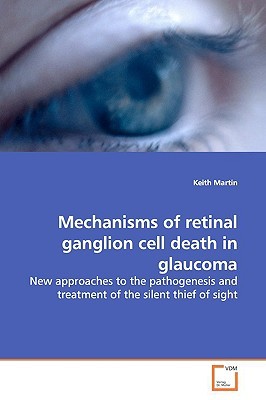
- We will send in 10–14 business days.
- Author: Keith Martin
- Publisher: VDM Verlag
- ISBN-10: 3639161653
- ISBN-13: 9783639161656
- Format: 15.2 x 22.9 x 0.6 cm, minkšti viršeliai
- Language: English
- SAVE -10% with code: EXTRA
Mechanisms of retinal ganglion cell death in glaucoma (e-book) (used book) | bookbook.eu
Reviews
Description
Elevated intraocular pressure is the most significant risk factor in glaucoma but the mechanisms of retinal ganglion cell death in remain incompletely understood. Animal models of glaucoma provide a way to study the possible pathogenesis of glaucomatous retinal ganglion cell death and to assess potential neuroprotective strategies. In this volume, Dr Keith Martin describes in detail how a trabecular laser glaucoma model can be used to study changes occuring in the retina and optic nerve of eyes with elevated intraocular pressure. The possible involvement of retinal glutamate transporters in glaucoma is explored, hinting at possible new treatment approaches. Dr Martin goes on to describe in detail the techniques that led to the first successful use of neurotrophic factor gene therapy to reduce retinal ganglion cell death in experimental glaucoma.
EXTRA 10 % discount with code: EXTRA
The promotion ends in 22d.16:14:58
The discount code is valid when purchasing from 10 €. Discounts do not stack.
- Author: Keith Martin
- Publisher: VDM Verlag
- ISBN-10: 3639161653
- ISBN-13: 9783639161656
- Format: 15.2 x 22.9 x 0.6 cm, minkšti viršeliai
- Language: English English
Elevated intraocular pressure is the most significant risk factor in glaucoma but the mechanisms of retinal ganglion cell death in remain incompletely understood. Animal models of glaucoma provide a way to study the possible pathogenesis of glaucomatous retinal ganglion cell death and to assess potential neuroprotective strategies. In this volume, Dr Keith Martin describes in detail how a trabecular laser glaucoma model can be used to study changes occuring in the retina and optic nerve of eyes with elevated intraocular pressure. The possible involvement of retinal glutamate transporters in glaucoma is explored, hinting at possible new treatment approaches. Dr Martin goes on to describe in detail the techniques that led to the first successful use of neurotrophic factor gene therapy to reduce retinal ganglion cell death in experimental glaucoma.


Reviews